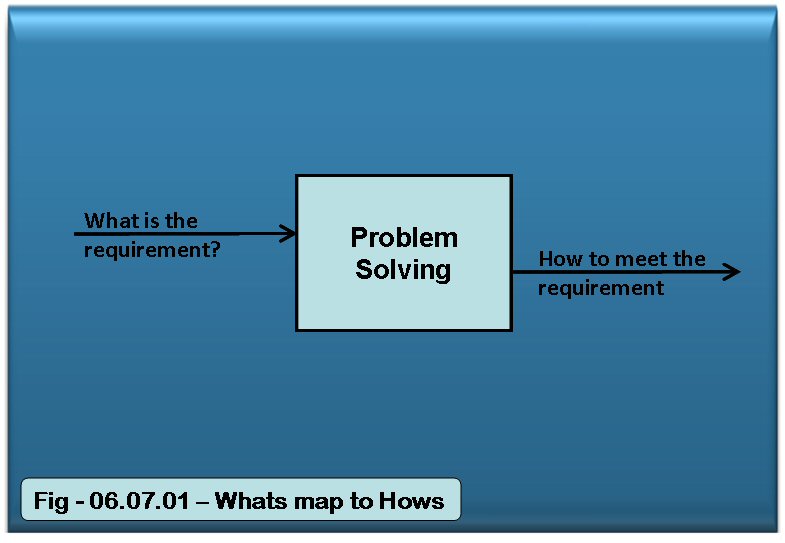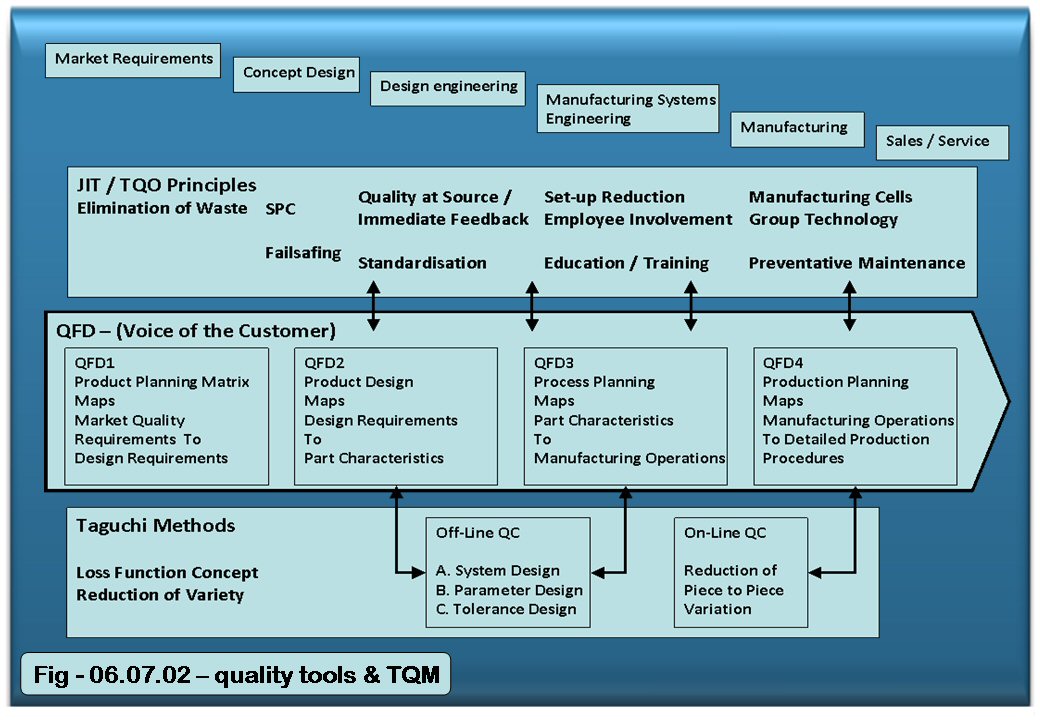6.07 - Quality Function Deployment (QFD) - The Basics
Overview
Quality Function Deployment (QFD) is an approach to product / process design that employs a collection of tools (i.e. Input / Output, Cause & Effect, etc.) to highlight where engineering effort should be expended and, just as importantly, where not to invest time and money. In many respects it parallels FMEA (i.e. identify elements, sources of problems, relative severity of problems, add up points and focus on priorities – see guide 4.13) in its ability to help determine where quality technology and engineering effort (e.g. Taguchi Methods) should be applied.

Establish the combinations and relationships between the Whats (outputs) and the Hows (Inputs) (i.e. how strongly does a what relate to a how). This process can be completed by the use of analysis techniques such as Cause and Effect, Pie Charts, etc.
Score and rank to establish a priority order for implementation (a form of Pareto analysis). These scores will provide the focus for action.
The next diagram shows a simple example of a competed matrix. The completed QFD1 matrix is sometimes called a Product Planning Matrix.
QFD Analysis
Relationship of Various Quality Tools and TQO Principles
